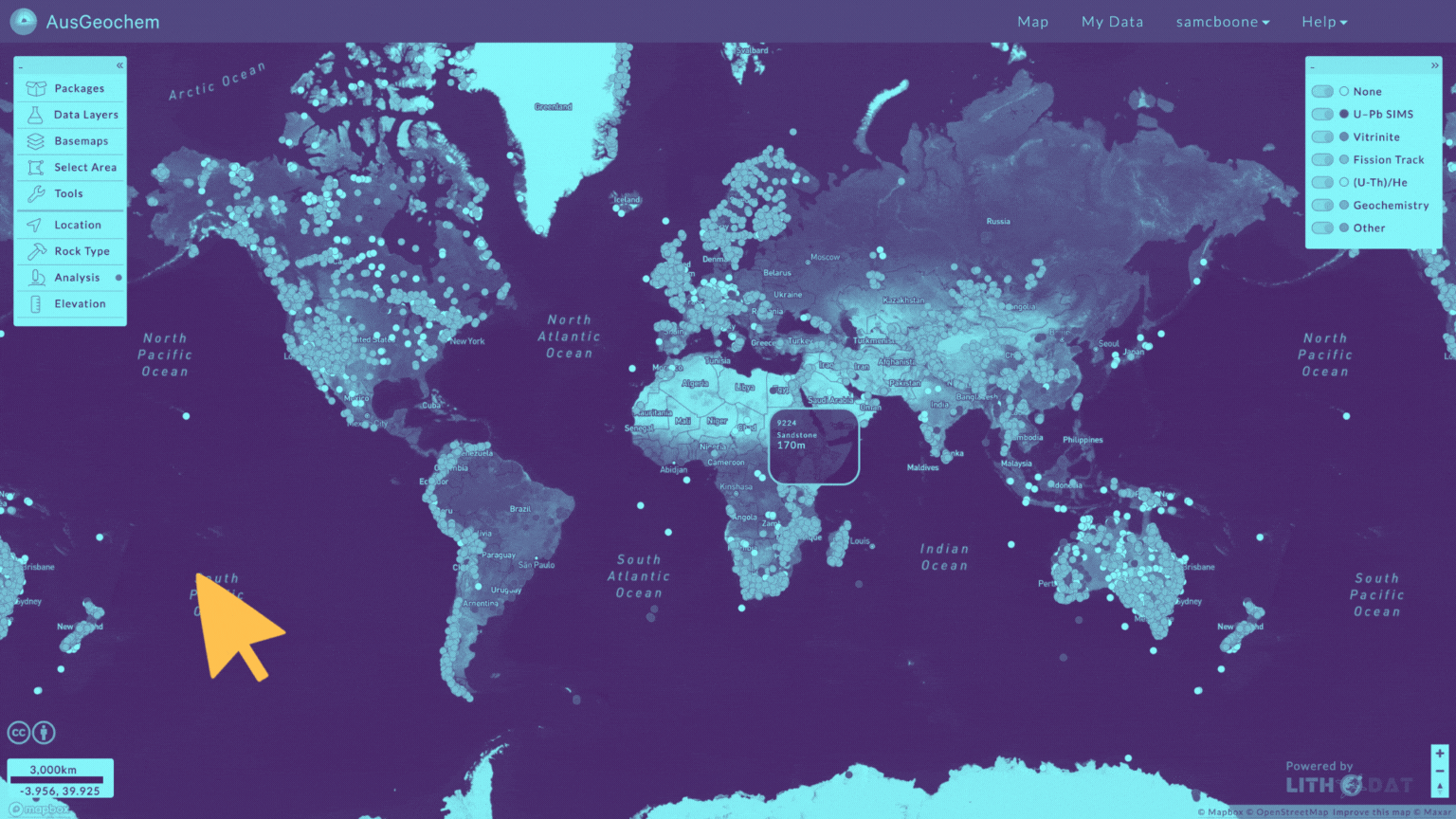Universities and AuScope deliver a remarkable tool for exploration with geochemistry
AusGeochem Portal. Image: edited by AuScope
Covering the precompetitive sector, I see a lot of data portals and portmanteau names. So if I told you the NCRIS enabled AuScope Geochemistry Network (AGN) had developed a portal by the name of AusGeochem, you would struggle to see what’s new.
But AusGeochem is different to anything you have seen and quietly breathtaking in its capabilities. The key point of difference is AusGeochem is designed as a tool for 4D (3D through time) data interrogation, in addition to being a repository of data.
The technical wizardry at the heart of AusGeochem is a unique relational database, where data on every sample is linked to every other piece of data in the system via a network of predefined relationships. This enables profound analytical capability, which has been developed through a collaboration between AuScope-funded AGN and Melbourne-based geospatial data solutions company Lithodat Pty Ltd.
In addition to all the usual major, minor and trace element geochemistry, data types include geochronology, isotopes, thermochronology and high-resolution images of samples.
The following image provides a glimpse of what it can do following the introduction last month of a new paleo reconstruction function that places samples in their paleogeographic context, through an integration with the University of Sydney EarthByte group’s GPlates web service.
The image shows the North Australia Craton and North China Craton sitting next to each other in the Proterozoic and the distribution of U-Pb data across the cratons. Sam Boone, who leads tectonic and thermochronology research at the University of Melbourne and is one of the driving forces in AGN, produced this image in a matter of seconds for Precompetitive Review. A few seconds later, Sam had generated a spatial interpolation of zircon U-Pb ages across the then separate North and South Australian Cratons.
I asked Sam to run this example because the neighbourly relationship of the NAC and NCC through much of the Proterozoic is not just academically interesting; it suggests analogues of China’s Bayan Obo rare earths in northern Australia.
The analytical capability is exciting, but the data itself also has opportunities for explorers because some of the data will be new to the exploration industry.
AusGeochem has about 60,000 samples and associated data from across the globe, produced by an assortment of world-class geochemical laboratories at universities across Australia. (Academics in Australian universities don’t just study Australia!)
The AusGeochem database is continually growing. Later this month, for example, the Steve Barnes dataset from CSIRO will be made public, comprising whole rock major and trace element geochemistry from another 5,759 samples primarily spread across WA.
Initially, there were three universities in AGN – Curtin University, the University of Melbourne and Macquarie University. Last year, a further eight universities joined, with a commensurate big increase in the number of samples and associated data stored in AusGeochem.
Much of the data generated by universities are already in the public domain. For example, analytical work by Curtin University’s John de Laeter Centre for GA on heavy minerals will be found on GA’s EFTF portal and AusGeochem.
But Sam said there was also a lot of geochemistry for academic work currently either not in the public domain or at least very difficult to find. Getting these results into the hands of other academics and the exploration industry was the primary driver behind AusGeochem.
The following image is another example of the power of AusGeochem – half a dozen interactive analytical plots of more 2,000 geochemical analyses from across Western Australia. These can be plotted in seconds, switched to any other metal or element in seconds and varied from prospect to regional and even to continental scale just as quickly.
As good as that is, Sam was keen to highlight that the diverse data in AusGeochem allowed explorers to gain new insights in much more sophisticated ways than merely looking for metal assays.
“For example, we have a database of all the apatite fission track data that has ever been produced from Australia.”
This low-temperature thermochronometer tracks the thermal history of rocks in response to near-surface processes, like erosion, tectonic uplift and burial. Since temperature broadly relates to depth, these can record a history of rock movement towards the surface.
“This history could be really important, for example, to an explorer targeting porphyry copper in Devonian copper systems in the Lachlan Fold Belt.
They will probably have a model for when mineralisation occurred and at what depths. If they know from the thermochronology data that there has been 6 kms of exhumation and erosion since the Devonian, they will know their porphyry copper deposit thought to have formed at, say, 3 to 5 km depth, has been eroded away. That area is no longer prospective for them.
That’s why being able to look at all different types of data in concert is really important.”
In addition to continuing to expand AusGeochem functionalities, the AGN hopes to begin working more closely with industry and would be interested in receiving “donations” of datasets from industry which are no longer proprietary.
AUTHOR
Re-published with permission from David Upton - Precompetitive Review
Edited by Philomena Manifold
MORE INFORMATION
AGN Register
AuScope Geochemistry Network (AGN)
Dr Sam Boon, The University of Adelaide





